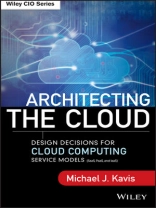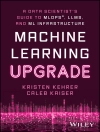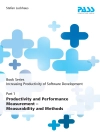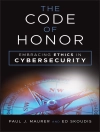An expert guide to selecting the right cloud service model for your business
Cloud computing is all the rage, allowing for the delivery of computing and storage capacity to a diverse community of end-recipients. However, before you can decide on a cloud model, you need to determine what the ideal cloud service model is for your business. Helping you cut through all the haze, Architecting the Cloud is vendor neutral and guides you in making one of the most critical technology decisions that you will face: selecting the right cloud service model(s) based on a combination of both business and technology requirements.
- Guides corporations through key cloud design considerations
- Discusses the pros and cons of each cloud service model
- Highlights major design considerations in areas such as security, data privacy, logging, data storage, SLA monitoring, and more
- Clearly defines the services cloud providers offer for each service model and the cloud services IT must provide
Arming you with the information you need to choose the right cloud service provider, Architecting the Cloud is a comprehensive guide covering everything you need to be aware of in selecting the right cloud service model for you.
Tabela de Conteúdo
Foreword xiii
Preface xv
Acknowledgments xix
About the author xxi
Chapter 1 Why Cloud, Why Now? 1
Evolution of Cloud Computing 3
Enter the Cloud 6
Start-Up Case Study: Instagram, from Zero to a Billion Overnight 8
Established Company Case Study: Netflix, Shifting from On-Premises to the Cloud 9
Government Case Study: NOAA, E-mail, and Collaboration in the Cloud 10
Not-for-Profit Case Study: Obama Campaign, Six-Month Shelf-Life with One Big Peak 10
Summary 11
Chapter 2 Cloud Service Models 13
Infrastructure as a Service 13
Platform as a Service 15
Software as a Service 17
Deployment Models 18
Summary 22
Chapter 3 Cloud Computing Worst Practices 23
Avoiding Failure When Moving to the Cloud 23
Migrating Applications to the Cloud 23
Misguided Expectations 27
Misinformed about Cloud Security 29
Selecting a Favorite Vendor, Not an Appropriate Vendor 31
Outages and Out-of-Business Scenarios 31
Underestimating the Impacts of Organizational Change 33
Skills Shortage 35
Misunderstanding Customer Requirements 36
Unexpected Costs 37
Summary 39
Chapter 4 It Starts with Architecture 41
The Importance of Why, Who, What, Where, When, and How 41
Start with the Business Architecture 43
Identify the Problem Statement (Why) 47
Evaluate User Characteristics (Who) 48
Identify Business and Technical Requirements (What) 48
Visualize the Service Consumer Experience (Where) 49
Identify the Project Constraints (When and with What) 51
Understand Current State Constraints (How) 52
Summary 54
Chapter 5 Choosing the Right Cloud Service Model 55
Considerations when Choosing a Cloud Service Model 56
When to Use Saa S 59
When to Use Paa S 62
When to Use Iaa S 65
Common Cloud Use Cases 68
Summary 69
Chapter 6 The Key to the Cloud: RESTful Services 71
Why REST? 72
The Challenges of Migrating Legacy Systems to the Cloud 74
Summary 75
Chapter 7 Auditing in the Cloud 77
Data and Cloud Security 78
Auditing Cloud Applications 78
Regulations in the Cloud 80
Audit Design Strategies 83
Summary 85
Chapter 8 Data Considerations in the Cloud 87
Data Characteristics 87
Multitenant or Single Tenant 92
Choosing Data Store Types 95
Summary 98
Chapter 9 Security Design in the Cloud 99
The Truth about Data in the Cloud 100
How Much Security Is Required 101
Responsibilities for Each Cloud Service Model 104
Security Strategies 108
Areas of Focus 110
Summary 118
Chapter 10 Creating a Centralized Logging Strategy 119
Log File Uses 119
Logging Requirements 120
Summary 124
Chapter 11 SLA Management 127
Factors That Impact SLAs 127
Defining SLAs 130
Managing Vendor SLAs 132
Summary 135
Chapter 12 Monitoring Strategies 137
Proactive vs. Reactive Monitoring 137
What Needs to Be Monitored? 138
Monitoring Strategies by Category 139
Monitoring by Cloud Service Level 145
Summary 147
Chapter 13 Disaster Recovery Planning 149
What Is the Cost of Downtime? 149
Disaster Recovery Strategies for Iaa S 151
Recovering from a Disaster in the Primary Data Center 152
Disaster Recovery Strategies for Paa S 157
Disaster Recovery Strategies for Saa S 159
Disaster Recovery Hybrid Clouds 160
Summary 162
Chapter 14 Leveraging a Dev Ops Culture to Deliver Software Faster and More Reliably 163
Developing the Dev Ops Mind-Set 163
Automate Infrastructure 165
Automate Deployments 166
Design Feature Flags 167
Measure, Monitor, and Experiment 167
Continuous Integration and Continuous Delivery 168
Summary 170
Chapter 15 Assessing the Organizational Impact of the Cloud Model 171
Enterprise Model vs. Elastic Cloud Model 172
IT Impact 173
Business Impacts 174
Organization Change Planning 178
Change in the Real World 180
Summary 181
Chapter 16 Final Thoughts 183
The Cloud Is Evolving Rapidly 183
Cloud Culture 185
New Business Models 186
Paa S Is the Game Changer 187
Summary 190
Index 193
Sobre o autor
MICHAEL J. KAVIS is Principal Architect at Cloud Technology Partners, a vendor independent, cloud-exclusive, nimble alternative to large technology consultants. He has served in numerous technical roles such as CTO, Chief Architect, and Vice President and has over 25 years of experience in software development and architecture. Kavis is a pioneer in cloud computing and led a team that built the world’s first high-speed transaction network in Amazon’s public cloud. He is the former CTO of startup M-Dot Network, which won the 2010 Amazon AWS Global Startup Challenge.












